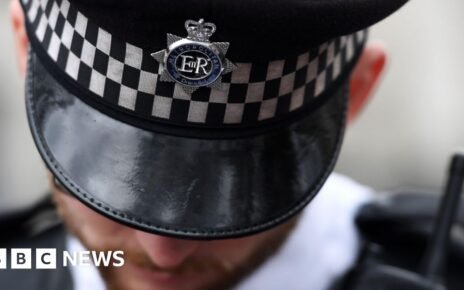Geoff Maskell,BBC News NI
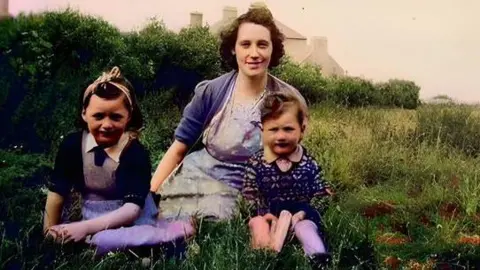 Sweeney family
Sweeney familyAs a young woman growing up in County Kerry, Maureen Flavin Sweeney dreamed of moving to the United States.
Belmullet in County Mayo, on the Atlantic coast of Ireland, was as far west as she got.
There she married a lighthouse keeper, raised a family and on 4 June 1944 made a weather report that changed the course of history.
Built in 1866, the lighthouse at Blacksod lacks commanding views out over the vast ocean.
It does, however, have geography on its side at the very western edge of Europe.
For the D-Day invasion planners in southern England, Ms Sweeney’s weather reports would be the first to confirm any break in the weather.
After a settled month in May 1944, conditions at the start of June were much less favourable for those planning the operation to re-enter Nazi-occupied France.
What was D-Day?
That operation – D-Day, also known as the Normandy landings – would see troops from the UK, the US, Canada and France attack German forces on the coast of northern France on 6 June 1944.
It was the largest seaborne invasion in history and one of the most significant events in World War Two, which marked a turning point in the fight against Nazi Germany.
However, Operation Overlord required a very specific set of conditions: to take place shortly before dawn, on a rising tide and preferably on a night with a full moon.
That limited the available dates to 21-23 May, 5-7 June, 18-20 June and 3-5 July 1944.
Narrow window of opportunity
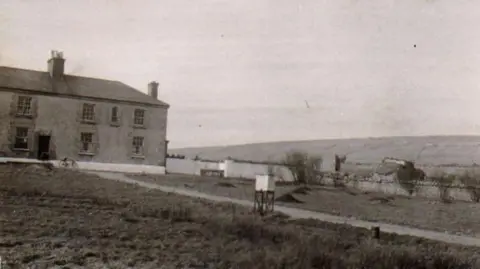 Sweeney family
Sweeney familyDates in May had been discounted for logistical reasons and on the night of 2-3 June, Ms Sweeney reported bad weather; a rapidly falling barometer and a force six wind.
This report was forwarded from the Irish Met Service to the Allied headquarters in southern England.
Unusually, Ms Sweeney received a call back a short while later.
It was a woman with an English accent asking for confirmation of the report.
Her future husband, lighthouse keeper Ted Sweeney, had just returned when the call came through.
“We checked and rechecked, and the figures were the same both times, so we were happy enough,” she later told Ireland’s Eye magazine.
It was a call that shaped history.
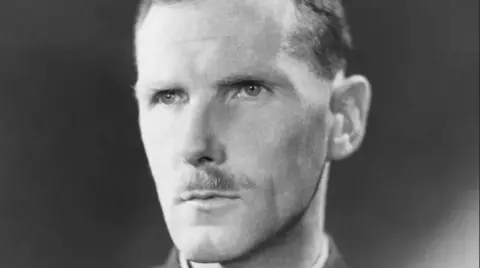
History’s most important forecast
Some 12,000 aircraft, several thousand vessels and 150,000 troops would eventually take part in D-Day on 6 June.
The weather report from Belmullet was enough for the chief meteorological officer, Group Captain James Stagg, to advise that the invasion be postponed by 24 hours.
“The whole situation from the British Isles to Newfoundland has been transformed in recent days and is now potentially full of menace,” Stagg had told General Dwight D Eisenhower.
For the Allied troops waiting under canvas in camps across the south of England, the weekend of 3-5 June saw strong winds, low cloud and rough seas.
On Saturday 3 June, Eisenhower gave the order to postpone.
 Sweeney family
Sweeney familyA break in the weather
Eisenhower and his commanders faced a real dilemma balancing secrecy and success.
Launch the invasion in bad weather and risk failure, or delay and increase the chance of the invasion plans leaking.
British Prime Minister Winston Churchill had already imposed a ban on travel and communication between Britain and Ireland, both north and south, on 14 March 1944.
But weather reports were still being received from neutral Ireland under an agreement signed between the two governments in May 1939.
Information from 10 Irish weather stations – including Blacksod – was supplied hourly. And on 4 June the crucial information came through.
Group Captain Stagg believed a ridge of high pressure was building up from the Azores.
A ridge that would give a window of better weather.
And on 4 June, confirmation came from Belmullet when Ted Sweeney reported: “Heavy rain and drizzle cleared, cloud at 900 feet and visibility on land and sea very clear.”
At 04:15 on the morning of 5 June 1944, Eisenhower met with his senior staff and told them: “OK, We’ll go.”
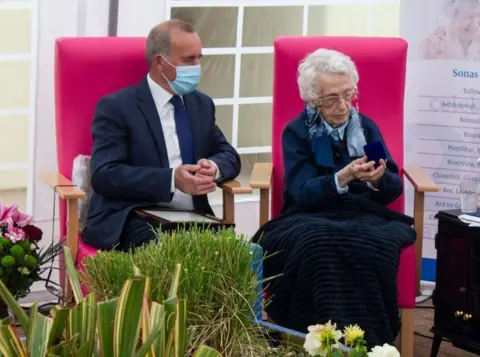 Sweeney family
Sweeney familyMaureen and Ted married after the war, but neither knew the role that they had played in D-Day until 1956.
In that year the weather station was automated and moved from the lighthouse to Belmullet town and the secret was shared with the couple.
It was announced more publicly in 2004 with the unveiling of a plaque at the lighthouse and in 2020, Maureen Flavin Sweeney, then 98, received a special US House of Representatives honour for her part in the war.
The importance of weather
If the invasion had been postponed again until the next available date, 18 June 1944, the results could have been very different.
That week the worst storm for 40 years arrived in the English Channel and would have made the landings impossible.
In 1961, while going to his inauguration, President John F. Kennedy asked Eisenhower what had given him the edge on D-Day.
He replied: “Because we had better meteorologists than the Germans.”
Those meteorologists had Maureen and Ted Sweeney carefully watching the weather on the rural west coast of Ireland.


